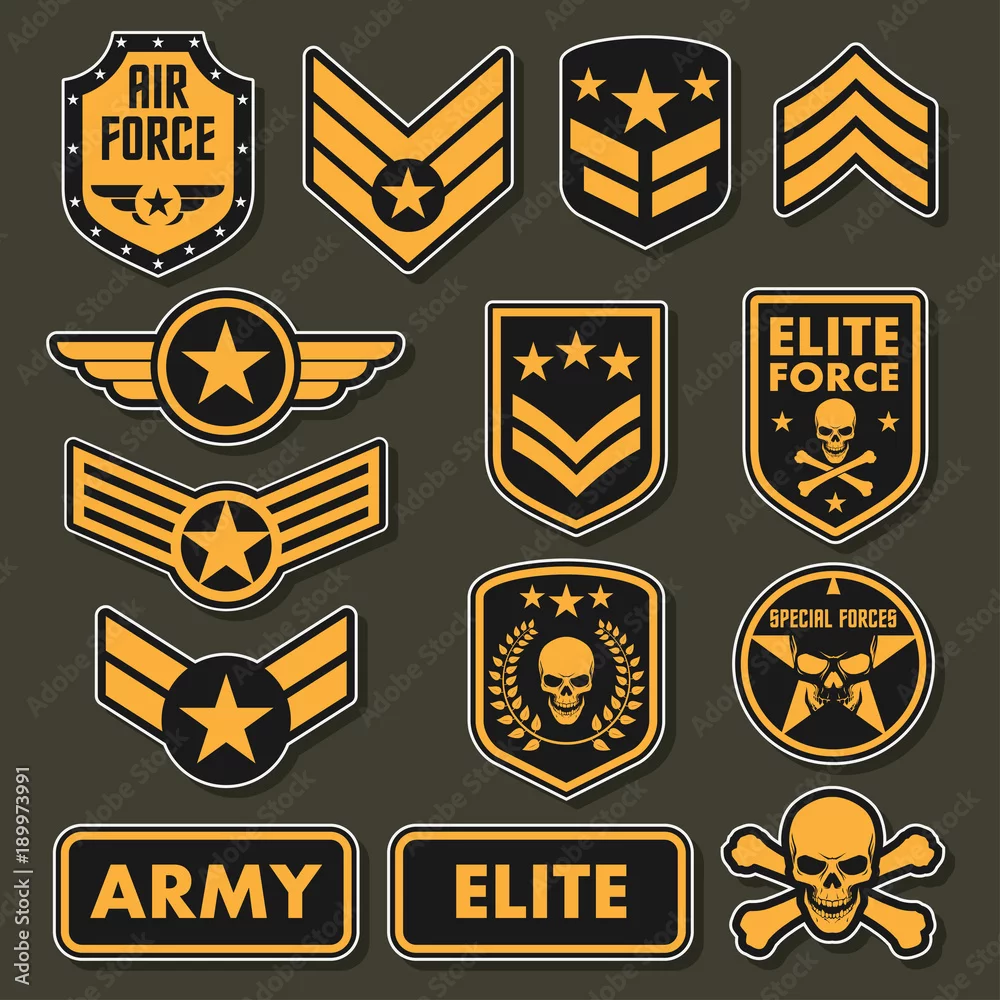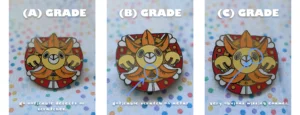When you first come across a U.S. military pin, you might find yourself thinking of medieval crests—those intricate emblems painted on shields or stitched into banners. You wouldn’t be wrong.
In fact, many elements of today’s military insignia draw direct inspiration from those centuries-old heraldic traditions. Back in the 12th century, European lords, knights, and noble families used coats of arms as battlefield identifiers and status symbols. Each design followed strict rules of heraldry—colors, symbols, shapes, and mottos carefully chosen to represent lineage, allegiance, and honor.
Fast-forward a few hundred years, and you’ll see those same design ideas living on in modern military pins. The U.S. Army’s distinctive unit insignia (DUI), for example, often takes the form of a shield, decorated with eagles, swords, or castles—each element packed with historical significance.
But military pins have evolved far beyond their medieval roots. They’re no longer just symbolic; they serve functional, ceremonial, and emotional purposes. So what do they all mean? Let’s take a closer look.

The First Meaning of Military Pins
The earliest uses of military pins weren’t about flair—they were about function. On the battlefield, it was essential to identify allies quickly. Pins, patches, and other insignia helped soldiers know who was who in the chaos of combat.
But as military organizations became more structured, so did their symbols. A pin didn’t just say, “I’m on your side.” It said, “I’m part of this unit, I hold this rank, I’ve earned this honor.” Over time, pins became a way to tell a personal story—of achievements, affiliations, and sacrifices.
Changing Times, Evolving Meanings
As warfare and society evolved, so too did the meaning behind military insignia. Different branches of the U.S. military developed their own systems, incorporating unique design elements, placement rules, and qualifications.
What once served a strictly practical role grew into something deeper: a symbol of pride, history, and identity. From commemorating service in a specific conflict to recognizing specialized training or acts of valor, military pins became wearable records of personal and collective history.
A Quick Look: U.S. Military Pin Types
(Below, you’ll find a handy visual guide to the many categories of U.S. military pins. This section will include the responsive card-style layout we discussed earlier—so we’ll skip the formatting details for now.)
U.S. Military Pins – Overview Table
| Branch | Badge Type | Description |
|---|---|---|
| Air Force | Aeronautical / Aviation | Pilot, RPA Pilot, Navigator, Flight Surgeon, Astronaut, Flight Nurse, Aircrew. Levels: Basic, Senior, Command/Master. |
| Occupational | Roles beyond flying (e.g. Space Ops, Logistics, Public Affairs, Chaplain, Medical, Acquisition). Most have 3 levels. Mandatory wear for some fields. | |
| Duty & Identification | Includes Commander’s Insignia, Recruiting Badges, Instructor Badges, Inspector General Badge, Security Forces Badge, etc. | |
| Award / Marksmanship | Marksmanship Competition Badges, Outstanding Airman Badge. | |
| Cyber & STEM | Cyber Badge, STEM Badge – Basic to Advanced. | |
| Army | Combat & Special Skill | Combat Infantryman, Parachutist, Air Assault, Expert Infantryman, Mariner, Mountaineer. Up to 6 may be worn. |
| Identification | Drill Sergeant, Instructor, Recruiter, CID Agent, Counterintelligence, Army Staff Badge, Military Horseman, etc. | |
| Marksmanship | Rifle and pistol qualifications (see Marksmanship badges for details). | |
| Tabs | Ranger Tab, Special Forces Tab, etc. | |
| Marine Corps | Breast Insignia | Aviation, Parachutist, EOD, Diving badges. Worn above ribbons. |
| Identification | Military Police, CID Agent, Counterintelligence. | |
| Marksmanship | Rifle/pistol qualification and competition badges. | |
| Navy | Breast Insignia (Warfare/Command) | Warfare designators: Submarine Combat Patrol, Surface Warfare, SSBN Deterrent Patrol, etc. Surface Chaplain Officer badge is newly added. |
| Identification | Recruiting, Recruit Commanders, Law Enforcement (NSF, MA, Naval Corrections). | |
| Marksmanship | Considered part of badge system. | |
| Space Force | Occupational | Shared with Air Force: Space Ops, Intelligence, Cyber, Acquisition. Levels: Basic, Senior, Command. Mandatory for wear. |
| Duty & Identification | Space Staff Badge, Commander’s Insignia, USSF lapel. | |
| Coast Guard | Aviation | Aviator, Flight Surgeon, Aircrew, Rescue Swimmer. Flight Officer badge now obsolete but authorized. |
| Qualification | Cutterman, Coxswain, Port Security, Tactical Law Enforcement, Surfman, Diving. | |
| Command & Service Identification | Command Afloat/Ashore Pins, Officer-in-Charge, Commandant Staff Badge, Recruiting Badge. | |
| Civil Air Patrol | Aviation & Occupational | Aeronautical, Aircrew, Chaplain, Ground Team, Legal, Health Services. |
| Specialty & Command | Cyber & STEM, Incident Commander, Squadron Commander, etc. | |
| Service Badges | Service in CAP roles (e.g., National Board, Senior Advisor). | |
| All Services | Identification | Roles like Presidential Service, OSD, Joint Chiefs, Recruiting, Inspector General, CID, Law Enforcement, etc. Some are permanent; others are duty-specific. |
| Obsolete Badges | Varies | Examples: Bombardier Badge, Glider Pilot Badge (Army Air Forces), Flight Officer Badge (Coast Guard), Missing Aircraft Ribbon (CAP). May still be worn by those awarded. |
Sources such as Wikipedia and official military websites were referenced to ensure accuracy. For readers seeking deeper verification or expert-level detail, we recommend starting with entries like “United States military badges” and “Heraldry” on Wikipedia.
Beyond the Table: More About Military Insignia
While the overview gives a snapshot, there’s much more to know. Different branches have their own regulations about where pins are worn—on the chest, collar, beret, or shoulder. The placement isn’t just for looks; it’s part of a strict dress code that reflects military discipline and tradition.
Then there’s symbolism. A crossed musket might indicate infantry, wings show flight qualifications, and a torch can represent leadership or education. Each element is chosen with intention, often rooted in decades (or centuries) of military heritage.
Some pins are earned through grueling physical and academic tests—like the Army’s Ranger tab or the Navy’s SEAL trident. Others, like unit crests, represent where a service member has served. Many are awarded posthumously or passed down to honor family legacies.
From the Military to Modern Life
Interestingly, the idea of a badge or pin as a symbol of honor and identity has made its way into civilian life, too.
Take Japan, for instance. Attorneys wear sunflower lapel pins to show their official status—these are issued by the Japan Federation of Bar Associations and must be returned if the lawyer is disbarred. In corporate cultures around the world, companies design custom pins to recognize years of service, celebrate milestones, or build a sense of unity among teams.
What began as a battlefield necessity has become a universal symbol: of loyalty, achievement, and belonging.
Final Thoughts: A Badge with Purpose
Military pins are more than accessories. They’re living stories, miniature monuments to dedication, teamwork, and courage. Whether you’re commemorating service, celebrating a team, or building your own organization’s identity, a well-crafted pin carries weight.
And that’s where we come in.

At Factorypin, we’ve had the honor of creating custom military pins and challenge coins for organizations including the Albany Police Department and the United States Military Academy at West Point. With that experience comes a commitment to quality, reliability, and deep respect for what these symbols represent.
Whether you’re a veteran, a designer, a nonprofit, or a business owner, we’ll help you bring your vision to life—right down to the last detail.
Ready to create a pin that means something? Let’s get started.





